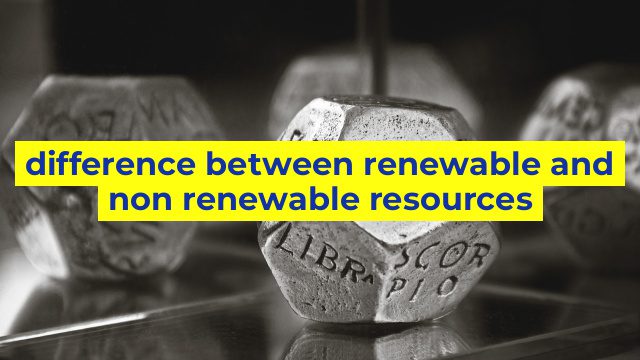The Difference Between Renewable and Non-Renewable Resources
When it comes to our planet’s natural resources, there are two main categories: renewable and non-renewable resources. Understanding the difference between the two is crucial when it comes to managing and protecting our planet’s resources.
Renewable Resources
Renewable resources are those that can be replenished naturally over time. They can be readily replaced or regenerated, making them an environmentally sustainable option. Some examples of renewable resources include solar energy, wind energy, geothermal energy, and hydropower.
One of the biggest advantages of renewable resources is their abundance and accessibility. Sunlight, wind, and water are available in most parts of the world and can be harnessed to generate clean energy. Additionally, renewable energy sources don’t produce harmful emissions, making them an eco-friendlier alternative to traditional sources of energy like coal and oil.
Non-Renewable Resources
Non-renewable resources, on the other hand, are those that are finite and cannot be replenished naturally. They are called fossil fuels, and examples include coal, oil, and natural gas. These resources took millions of years to form, and once they’re depleted, they’re gone forever.
The use of non-renewable resources has been associated with negative environmental impacts, including air and water pollution, habitat destruction, and climate change. Burning fossil fuels releases harmful emissions into the atmosphere, contributing to the greenhouse effect and resulting in global warming.
The Importance of Using Renewable Resources
The world’s demand for energy is growing, and it’s becoming increasingly important to use renewable resources to meet this energy demand. By using clean energy sources like wind and solar power, we can reduce our reliance on non-renewable resources and mitigate the negative impacts associated with their use.
Investing in renewable resources also helps to create jobs, boost local economies, and improve public health. By transitioning to a more sustainable energy system, we can build a brighter future for generations to come.
In conclusion, understanding the difference between renewable and non-renewable resources is essential in protecting the environment and securing a sustainable future. By prioritizing renewable resources, we can reduce our carbon footprint and work towards a cleaner, more sustainable world.
Table difference between renewable and non renewable resources
| Renewable Resources | Non-Renewable Resources |
|---|---|
| Energy sources are replenished naturally within our lifetime | Energy sources take thousands or millions of years to form |
| Examples include solar, wind, hydro, geothermal, and biomass energy | Examples include fossil fuels like coal, oil, and natural gas |
| Renewable energy sources do not produce harmful emissions | Non-renewable energy sources produce harmful emissions, such as carbon dioxide and sulfur dioxide, when burned |
| Renewable energy sources can be used endlessly without depleting the resource | Non-renewable energy sources will eventually run out |
| Renewable energy sources can help to reduce greenhouse gas emissions which contribute to climate change | Non-renewable energy sources contribute to climate change |

